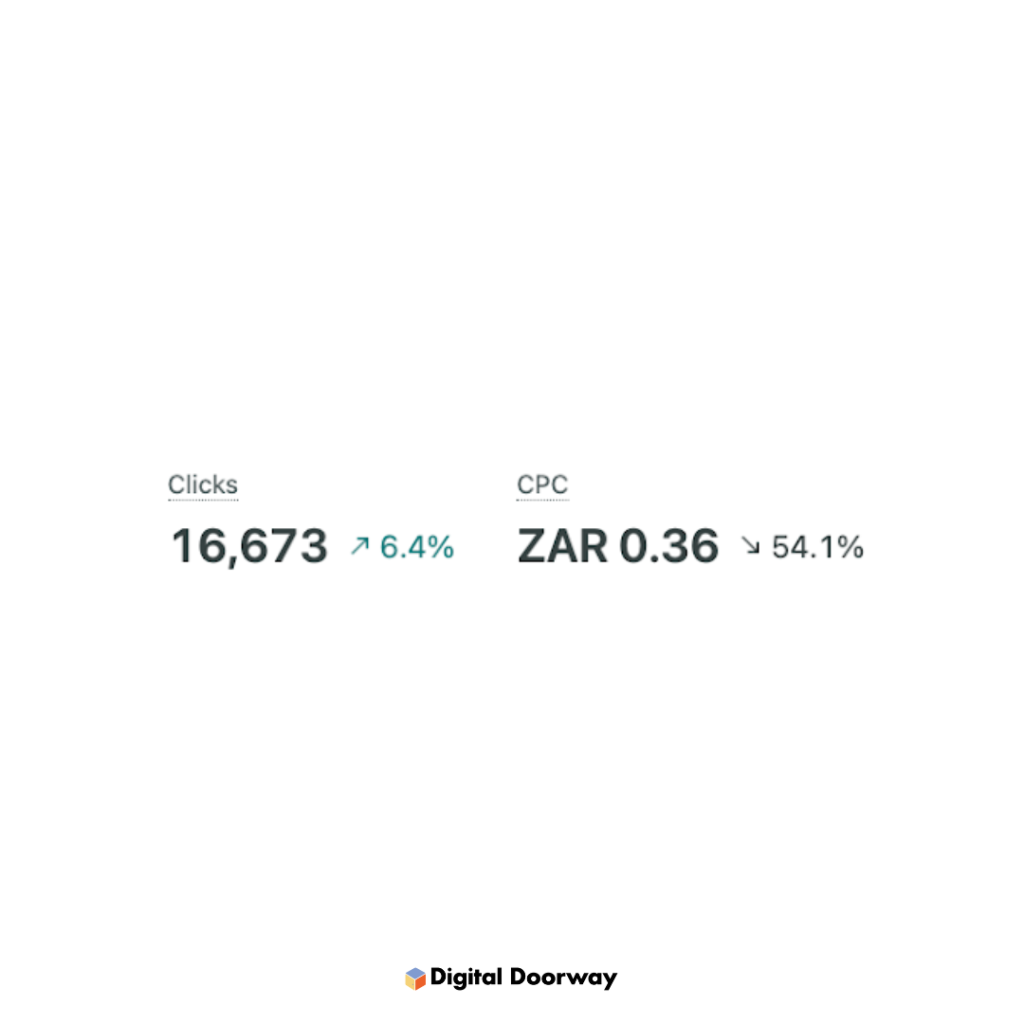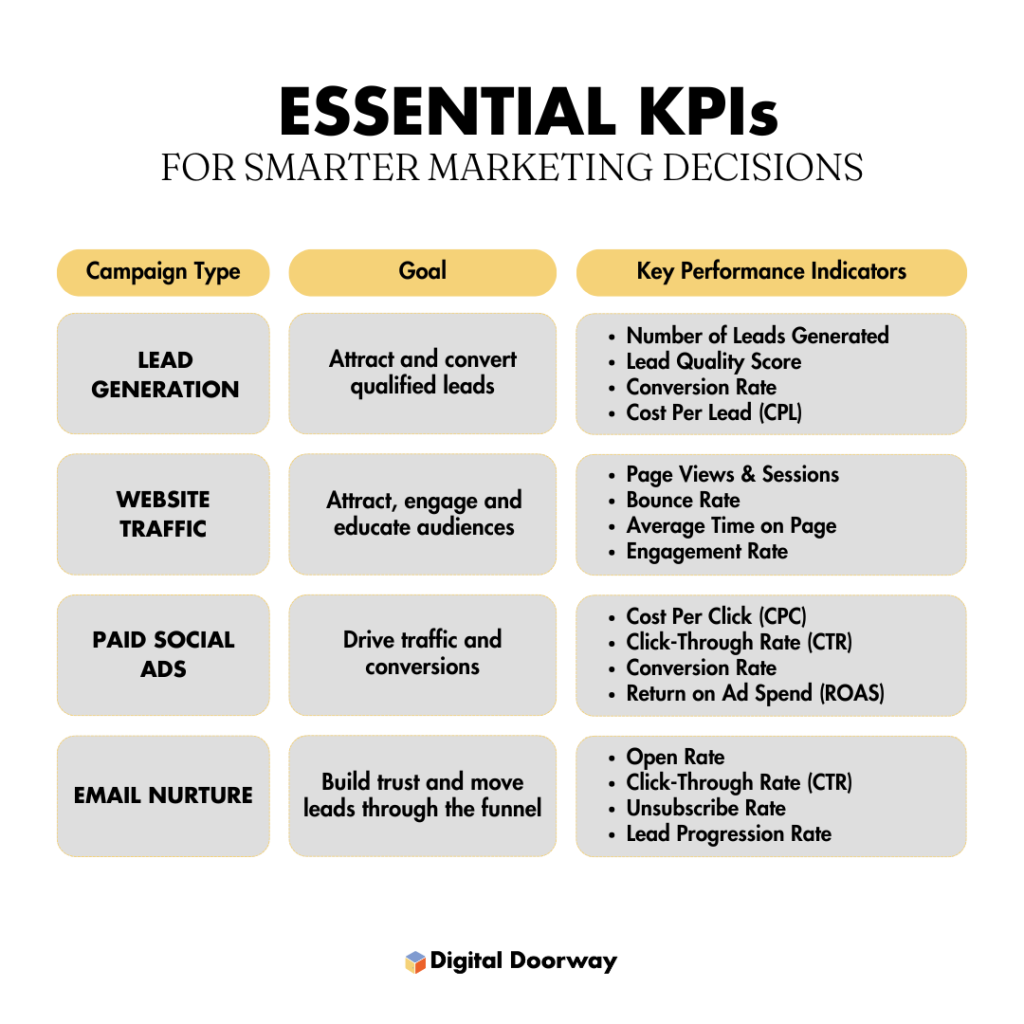Recently updated on June 13th, 2025 at 04:20 pm
You’ve probably heard the term ‘KPI’ thrown around in marketing meetings or on social media. And if you’re reading this article now, you likely know it’s important, but maybe you’re still figuring out why it really matters.
Think of it like this: top-tier sports teams often spend hours reviewing game footage to pinpoint their strengths and weaknesses. Likewise, marketing teams should be analysing their campaigns and content with the same level of strategic intent. Not every number matters equally. And in a world flooded with data, chasing the wrong ones can be a costly distraction.
What Are KPIs and Why Do We Need Them?
Key Performance Indicators (KPIs) are measurable values that show how effectively your marketing efforts are achieving your key business objectives. But they’re more than just industry jargon—they’re your compass.
KPIs help you know whether your team is on track or needs to change tactics. And here’s the thing: KPIs aren’t just a trend. They are an essential part of strategy execution, which enables you to improve based on real-time feedback from the market. But before you can select the relevant KPIs, you need to have two things clearly defined:
- Your business objectives (e.g., increase market share, grow revenue, improve retention)
- Your marketing goals (e.g., build brand awareness, generate qualified leads, drive conversions)
These two elements are the foundation. Without them, your KPIs are just numbers with no real direction. With them, you can sift through the noise and focus on the metrics that matter.
The Essentials of KPI Measurement
Leading vs. Lagging Indicators
It’s important to understand that not all KPIs serve the same purpose. Some are leading indicators (they predict possible future performance). Others are lagging indicators (they tell you what has already happened).
- Website traffic is a leading KPI. It indicates the level of interest and awareness that could eventually turn into leads or conversions.
- Conversion rate is a lagging KPI. It shows the end result of the customer journey and helps you assess how well your funnel is working.
The key is to track both so you can understand not just what happened, but also why it happened, and what might happen next.
How to Interpret Your KPIs
Data is only useful if you know what to do with it. Ask yourself:
- What does this KPI tell me when it goes up?
- What does it mean when it goes down?
- What insight can I take action on?
For example, if the cost per click (CPC) on your ad campaign is going down, that’s not bad. It means your ads are becoming more efficient, and you’re paying less for the same action.
The point? Numbers presented without context can be misleading. Learn to understand what they’re really saying.

Bundle Your Most Important KPIs
Looking at just one metric in isolation rarely gives you the full picture. Combining related KPIs to understand broader performance is crucial:
- If you’re tracking lead generation, don’t just look at the number of leads. Combine it with lead quality score, conversion rate, and cost per lead.
- For brand awareness, monitor reach alongside impressions, engagement rate, and website visits to effectively track your marketing efforts.
Remember: context is everything.
What You Need to Know
To put this all into practice, here’s a simplified roadmap:
- Establish Goals and Objectives
Start by defining what your business and marketing strategies are aiming to achieve. These should align and support each other. - Select the Right KPIs for Each Campaign
List out a few active or upcoming campaigns. For each one, pick 2–3 KPIs that reflect both leading and lagging indicators. - Define Who Tracks What and How Often
Set a routine reporting structure and ensure your marketing and sales teams are aligned. Knowing who tracks what ensures accountability and clarity.

Marketing doesn’t need to be a numbers game without direction. When you cut through the clutter and zero in on the KPIs that actually reflect your goals, you turn raw data into smart decisions, and that’s what moves the needle. Get in touch with us to power your marketing campaigns using useful and relevant data and insights.


